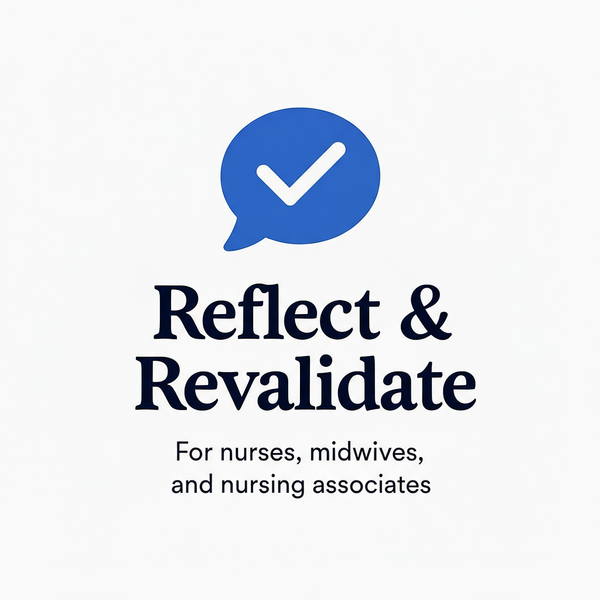Reflection: Caring for a Patient with Dementia in Acute Care
Share
Submitted by: M.T. - Adult Nurse, Orthopaedic Ward
What was the nature of the CPD activity and what did you hope to learn from it?
I was caring for Mrs. Khan (pseudonym), an 82-year-old woman with advanced dementia who had been admitted to our orthopaedic ward following a fall and fractured hip. Mrs. Khan was confused, distressed, and repeatedly trying to get out of bed, putting herself at risk of further injury.
The ward environment seemed to increase her agitation—the noise, unfamiliar surroundings, and multiple staff members were overwhelming for her. She kept calling out for her husband (who had died several years ago) and became upset when we tried to explain where she was or why she couldn't go home.
I felt frustrated that our standard ward routines and communication approaches weren't working for Mrs. Khan, and I was concerned about how to keep her safe while respecting her dignity and avoiding restrictive interventions. I hoped to learn how to provide person-centred care for patients with dementia in an acute hospital setting.
What did you learn from the CPD activity?
I learned that trying to reorient Mrs. Khan to reality ('Your husband has passed away' or 'You're in hospital') only increased her distress. Instead, I learned to enter her reality and provide reassurance. When she asked for her husband, I said 'He'll be here soon' or 'He knows you're safe,' which calmed her immediately.
I learned the importance of understanding the person behind the dementia. Mrs. Khan's daughter shared that her mother had been a teacher and loved music. I played classical music quietly by her bedside and spoke to her about teaching, which helped her relax and feel more comfortable.
The experience taught me about environmental modifications. I moved Mrs. Khan to a quieter bay, ensured she had familiar objects from home nearby, and minimised unnecessary noise and interruptions. These simple changes significantly reduced her agitation.
I also learned that distressed behaviour is communication. Mrs. Khan's attempts to get out of bed weren't 'difficult behaviour'—she was trying to tell us she was uncomfortable, needed the toilet, or was frightened. By addressing her underlying needs rather than just trying to keep her in bed, I could reduce her distress.
How did you change or improve my practice as a result?
I now always gather information about patients with dementia from their families—their life history, preferences, routines, and what helps when they're distressed. This person-centred information is just as important as their medical history and helps me provide individualised care.
I've changed my communication approach with patients with dementia. I now use short, simple sentences, maintain eye contact, speak calmly, and avoid arguing with or correcting confused statements. I've learned that validation and reassurance are more effective than reorientation.
I've also become an advocate for dementia-friendly care on our ward. I've worked with colleagues to create 'This is Me' documents for patients with dementia, ensuring all staff know important information about the person. I've also championed environmental modifications like reducing noise and providing activities.
Following this experience, I completed dementia awareness training and am now a dementia champion on our ward. I support colleagues in providing person-centred care and challenge practices that don't respect the dignity of patients with dementia.
How is this relevant to the Code?
This reflection demonstrates several aspects of the NMC Code:
Treat people as individuals (1.3): I adapted my care to meet Mrs. Khan's individual needs, preferences, and communication style rather than expecting her to fit into standard ward routines.
Respect diversity and individual preferences (1.5): I recognised that Mrs. Khan's dementia meant she experienced the world differently and adapted my approach accordingly.
Communicate effectively (7.3): I used appropriate verbal and non-verbal communication to meet Mrs. Khan's needs and reduce her distress.
Work in partnership (2.1): I worked collaboratively with Mrs. Khan's family to understand her needs and provide person-centred care.
Maintain knowledge and skills (22.3): I recognised a gap in my knowledge about dementia care and undertook training to improve my practice.
Do you have any further comments?
Mrs. Khan's post-operative recovery went much more smoothly once we implemented person-centred approaches. Her agitation reduced significantly, she ate and drank better, and she was able to participate in physiotherapy. Her daughter was grateful that we treated her mother with dignity and kindness.
This experience changed my understanding of dementia care in acute settings. I learned that hospitals can be frightening, confusing places for people with dementia, and that small adaptations to our practice can make a huge difference to their experience and outcomes.
I'm now passionate about improving dementia care in acute hospitals and ensuring that all patients, regardless of cognitive ability, receive compassionate, person-centred care that respects their dignity and individuality.
